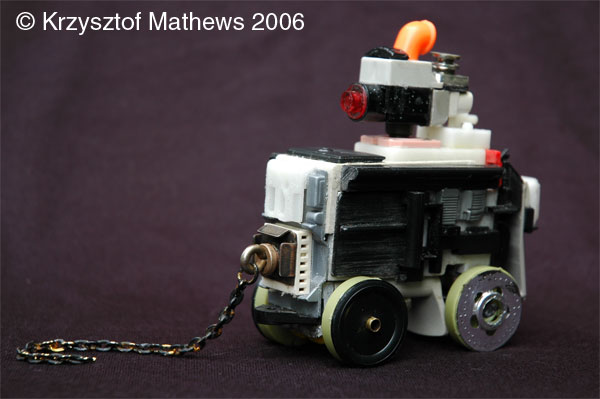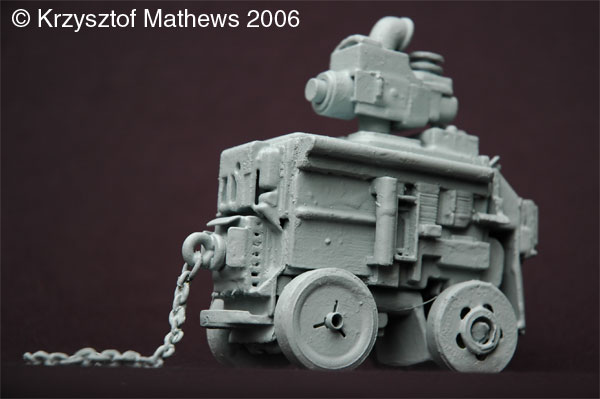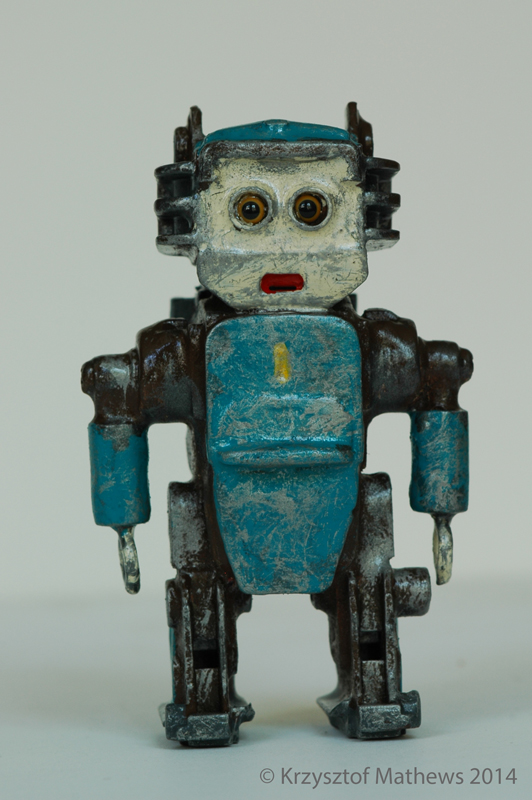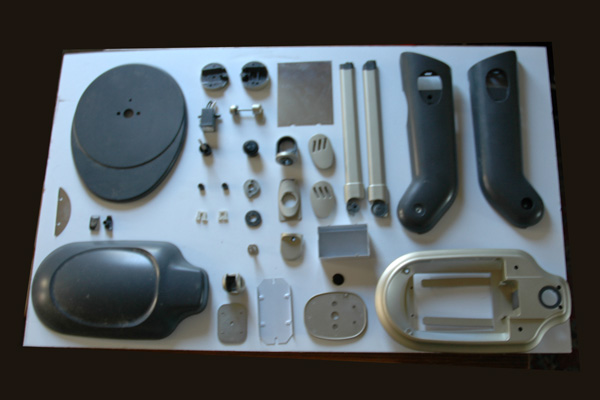The purpose of this section of my Web site is to explain and demonstrate my working process. Over the years, I have developed various means of constructing my sculptures, and then realizing them in a 3D virtual environment. It is something of an intensive process, however, and so I have broken it down into discreet sections in order to better clarify some of the basic operations involved.
Though I have been using computer graphics for several years now, my background is that of a sculptor and illustrator, thus, I tend to approach computer technology as a tool that continues to be informed by those skills and aesthetics.
Part 1: Sculpture
The initial sculptures that I create are found object assemblages. What that means is that I use a wide variety of objects made from hard plastic or metal components that I break down into smaller elements and recombine. I use everything from broken toys to consumer electronics, small appliances, kitchen utensils, home and garden tools, vacuum cleaners, small bike parts, and all manner of other items. In order to chop these parts down, I use small hacksaws and a Dremel rotary tool with different cutting heads.
Once I have selected and modified the pieces, they are joined with a combination of heavy-duty adhesives and mechanical fasteners such as bolts, screws, and rivets. Once construction is complete, the piece is then given a surface treatment of two part epoxy resin. This serves to help smooth transitions and lends strength to the finished piece

The piece, one joined and treated with epoxy resin, is then given a coat of primer.
This creates a uniform surface for painting, and helps to clarify any gaps or rough spots. Any such irregularities are then dealt with through the use of putty to fill cracks, and sanding tools to smooth out surfaces. The piece is then re-primed in preparation for painting.

The paint process involves a combination of enamel and acrylic paints in various layers.
I begin with basic areas of color and then work in to get detail. Once the detail is finished, there then comes a process of weathering the surface to simulate corrosion, patina, and general wear and tear. Often, a combination of dry-brushing and airbrushing is used, with the help of some powdered media such as chalk to create texture, or even a thin acrylic wash in places. One painting and weathering is finished, it is then given a good spray coat of a clear-coat fixative to protect the surface from basic handling.

At this point, the work stands on it’s own as an original finished sculpture, suitable for exhibition or sale. In this case, however, the sculpture has only begun its journey to become part of something much larger…


